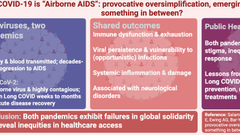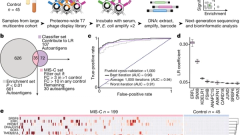ABSTRACT:
COVID-19 is a respiratory infection caused by SARS-CoV-2 and marked by an intense inflammatory response and immune dysregulation in the most severe cases. To clarify the relationship between peripheral immune system changes and disease severity, this study aimed to assess the immune profile of patients with COVID-19. For this, 157 patients with COVID- 19 were stratified into mild (n = 36), moderate (n = 30), severe (n = 32) and critical (n = 59) disease. Cellular components and circulating cytokines were evaluated by flow cytometry. Nitric oxide (NO) and myeloperoxidase (MPO) levels were measured by colorimetric tests. The results were compared with 30 healthy controls. Therefore, patients with COVID-19 presented relative and absolute neutrophilia, with signs of emergency myelopoiesis, especially in the most severe cases. Neutrophils also showed increased expression of CD62L, in moderate to critical conditions, when compared to the control group and mild patients. In addition, an increase in the neutrophil-to-lymphocyte ratio (NRL) was observed in these patients, due to an increase in neutrophils and a reduction in lymphocytes. Lymphocyte reduction occurred in T and B lymphocytes, but mainly in T cells, which did not show an increase in their differentiation, only in patients with mild symptoms. Within the T cell compartment, in patients with mild to critical conditions, a reduction in regulatory T cells (Treg) was also observed, which can disturb the balance between the regulatory and effector functions of the immune system, since these cells avoid an exacerbated immune response. The B cell compartment also showed several changes, with a reduction in memory B cells (BM) and an increase in plasmablasts, especially in patients with more severe cases. Patients with COVID-19 also showed signs of immunosuppression, observed by reduced expression of HLA-DR (MHC-II) in monocytes in patients with severe and critical condition. In addition, these patients showed an increased frequency of classical monocytes (cMo) and a reduction of non-classical monocytes (ncMo). These cells also showed an increase in atypical markers, such as CD56, which seems to be associated with the severity of the disease. Regarding the compartment of dendritic cells (DCs), patients with COVID-19, with a moderate to critical condition, showed a reduction in plasmacytoid DCs (pDCs) and an increase in classical DCs (cDCs). However, the absolute values of DCs were reduced in these patients. Finally, patients with COVID-19 had an increase in MPO, interleukin (IL)-12, IL-6, IL-10, and IL-8, accompanied by a reduction in IL-17A and NO. IL-10 concentrations and relative neutrophil counts have been shown to be related to mortality, which makes these parameters possible prognostic biomarkers for patients with COVID-19. The results of this study indicate the presence of systemic effects induced by COVID-19, which appear to be related to the pathophysiology of the disease.



